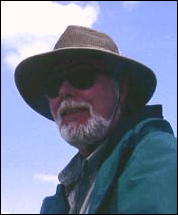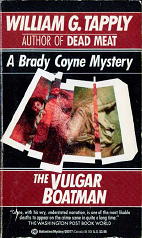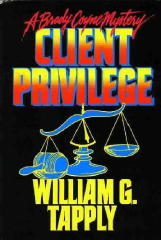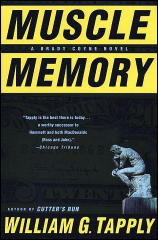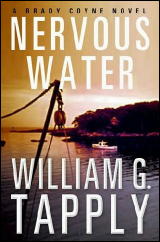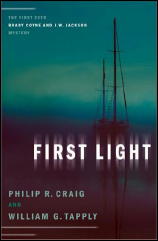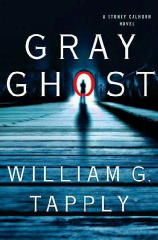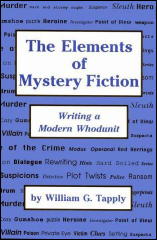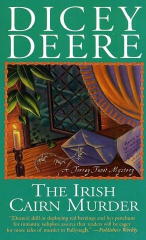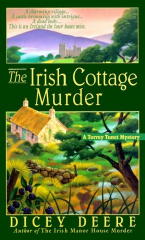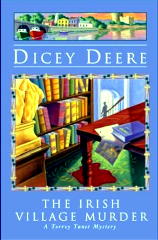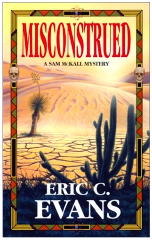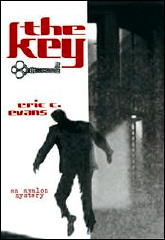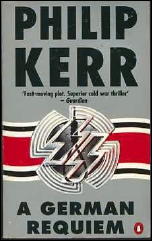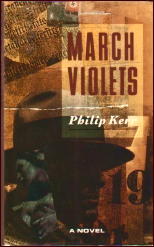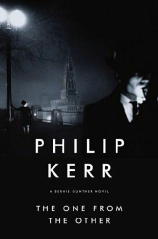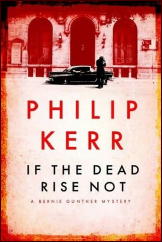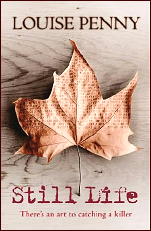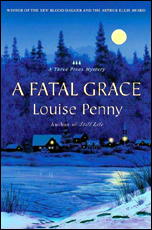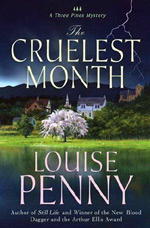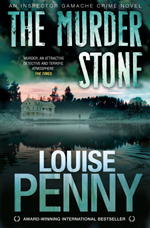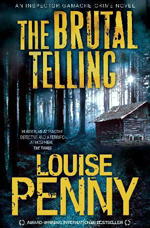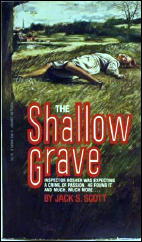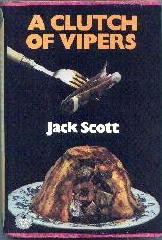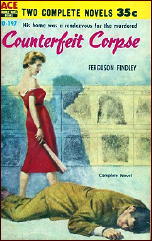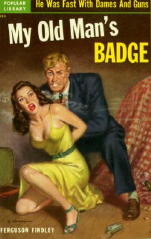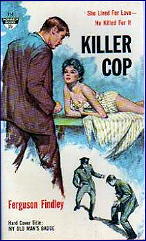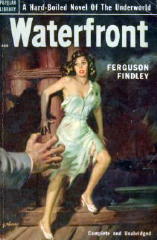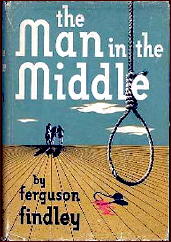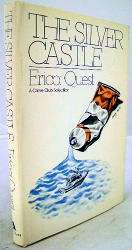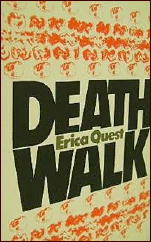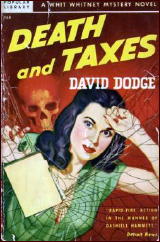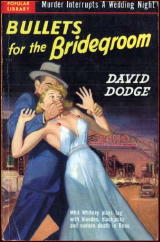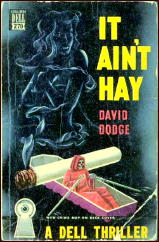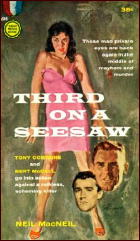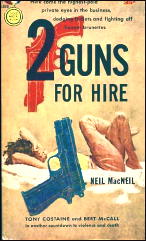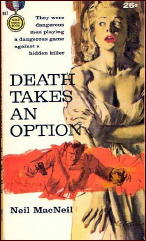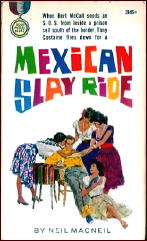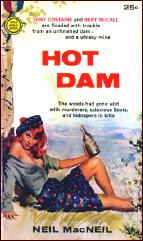DAVID DODGE – Shear the Black Sheep. Popular Library 202, paperback reprint; no date stated, but circa 1949. Hardcover edition: The Macmillan Co., 1942. Magazine appearance: Cosmopolitan, July 1942.
After I finished reading this, the second murder mystery adventure of accountant detective Jim “Whit” Whitney, I went researching as I usually do, and it didn’t come as any surprise to learn (from a website devoted to David Dodge) that Dodge was also a CPA by profession, and that he started writing mystery fiction only on a dare from his wife.
Although Dodge went on to another series (one with private eye Al Colby) and after that several standalones, there were only four books in the Whit Whitney series, to wit:
Death and Taxes. Macmilllan, hc, 1941. Popular Library 168, pb, 1949.
Shear the Black Sheep. Macmillan, hc, 1942. Popular Library 202, pb, 1949.
Bullets for the Bridegroom. Macmillan, hc, 1944. Popular Library 252, pb, 1950.
It Ain’t Hay. Simon & Schuster, hc, 1946. Dell 270, pb, mapback edition, 1949.
You can find much more detailed entries for each of these books at the David Dodge website, which includes a complete bibliography of all of his other books, both fiction and non-fiction. Not to mention his plays, his magazine stories, the articles he wrote and all of the radio, TV and movie adaptations of his work, the most well-known of which is To Catch a Thief, the Cary Grant and Grace Kelly film from 1955. Comprehensive is an understatement, and it’s definitely worth looking into, just to see a bibliography done right.
As for Whit Whitney, his home base is San Francisco, but in Shear the Black Sheep he is talked into taking a case in Los Angeles over the New Year’s Eve holiday weekend. Against his better judgment, he agrees to check into the activities of a client’s son, who seems to be spending too much of his father’s money in the business they’re in. They’re a wool brokerage firm — hence the title. The son has also left his wife and new-born baby. Is there another woman?
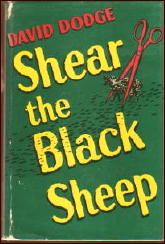
Assisting Whitney — or making her way down to LA on her own to spend the holiday with him, or as much of it as there is left after Whit’s investigative duties are over– is Kitty MacLeod, “the best-looking girl in San Francisco, and pretty clever as well,” as she’s described on page 12.
I’ve not read the first book in the series, and make no doubt about it, I will, but in that book (according the short recap on just about the same page) Whit’s former partner was murdered and at the time, Kitty was his wife.
It’s now six months later, and Whit and Kitty have become very close. Whit is beginning to worry that some of his colleagues are starting to talk. There had even been some talk at the time that Whit had had something to do with Kitty’s ex’s departure from life, and getting out of the jam at the time seems to be the gist of the story in Death and Taxes.
But that was then, and this is now. There is indeed a woman involved, as suspected — getting back to the case that Whit was hired to do — and the woman leads to a hotel room, and in the hotel room are … gamblers. A crooked card game, and the black sheep is getting sheared.
It is all sort of a light-hearted tale, in a way, but then a murder occurs, and a screwy case gets even screwier — in a hard-boiled kind of fashion. Let me quote from page 160. Whit is talking to his client, who speaks first:
“I don’t think it’s wise to interfere with the police, Whitney.”
“I won’t interfere with them. I’d cooperate with them except that they’ve told me to keep out of it. I want you to know how I feel, Mr. Clayton. You hired me to find out what Bob was doing with your money, and to stop it. I found out what was going on, but I thought the best way to stop it was to let these crooks get out on a limb, and then saw it off behind them. I thought I could protect your money and show Bob what was happening at the same time. I guessed wrong. I don’t know who killed […] or why he was killed, and I don’t think I’m responsible for his death, but I’m in a bad spot and I’d like to bail out of it by myself — for my own satisfaction. The police needn’t know what I’m doing. I don’t have to tell you that I don’t want to be paid for it, but if you haven’t any objection, I’ll try to find out who killed […] and get your money back.”
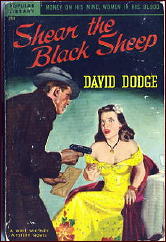
Here are a few lines from page 170, at which point things are not going so well:
He got off the bed and prowled thoughtfully around the room in his stocking feet, still holding the beer glass. What would Sherlock Holmes do with a case like this? Probably give himself a needleful in the arm — Whit drained his beer glass — and deduce the hell out of the case.
Whit tried deduction.
Those were the days when mystery thrillers were also detective novels. After a long paragraph in which Whit tries out his best logic on the tangled threads of the plot, and who was where and when and why:
It was a pretty wormy syllogism. As a deducer Whit knew he was a lemon when it came to logic, and he was an extra-sour lemon because he didn’t know enough about Bob Clayton to figure out what he might do in a given set of circumstances. Such as having a pair of football tickets to dispose of, for example. Ruth Martin might have known where they went, but didn’t, ditto Mrs. Clayton, ditto John Clayton. Jack Morgan was the next one to try.
What’s interesting is that Kitty has more to do with solving the case than Whit does. Things happen rather quickly at the end, and if all of the loose ends are (or are not) all tied up, no one other than I seems to think it matters, as long as the killer is caught — who was not someone I suspected, or did I? I probably suspected everyone at one point or another.
I also wonder if what happens on the last page has anything to do with the title of Whit Whitney’s next adventure in crime-solving. Read it, I must. And I will.
— March 2006.
[UPDATE] 06-24-09. That’s a promise to myself that I haven’t kept yet, alas, and re-reading this review (and looking at those paperback covers) gives me all the resolve I need to follow through. You can count on that and take it to the bank. Non-negotiable.
